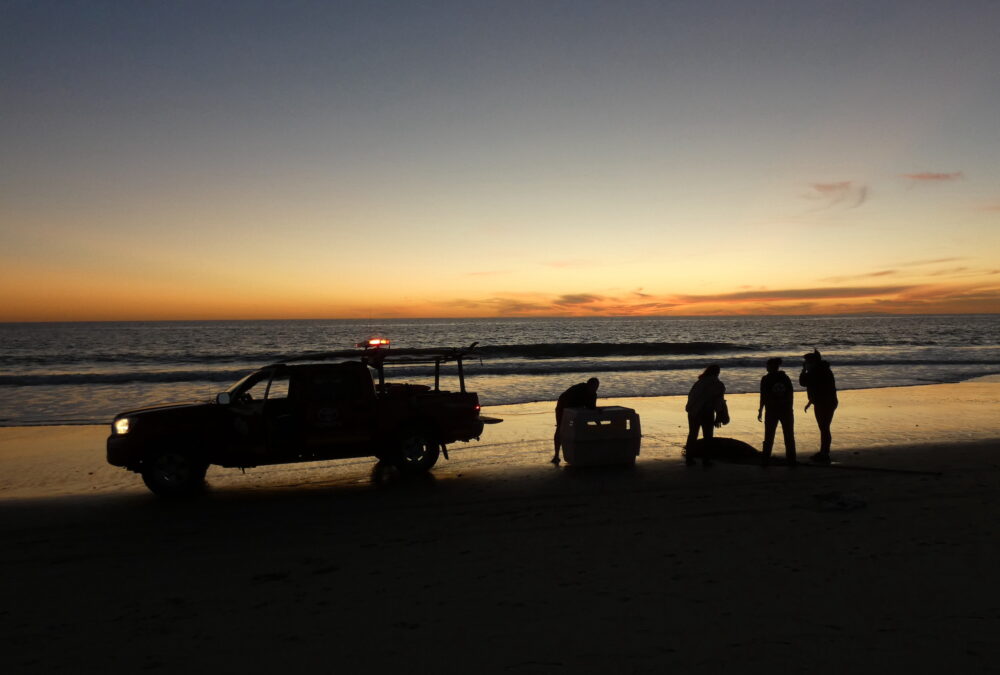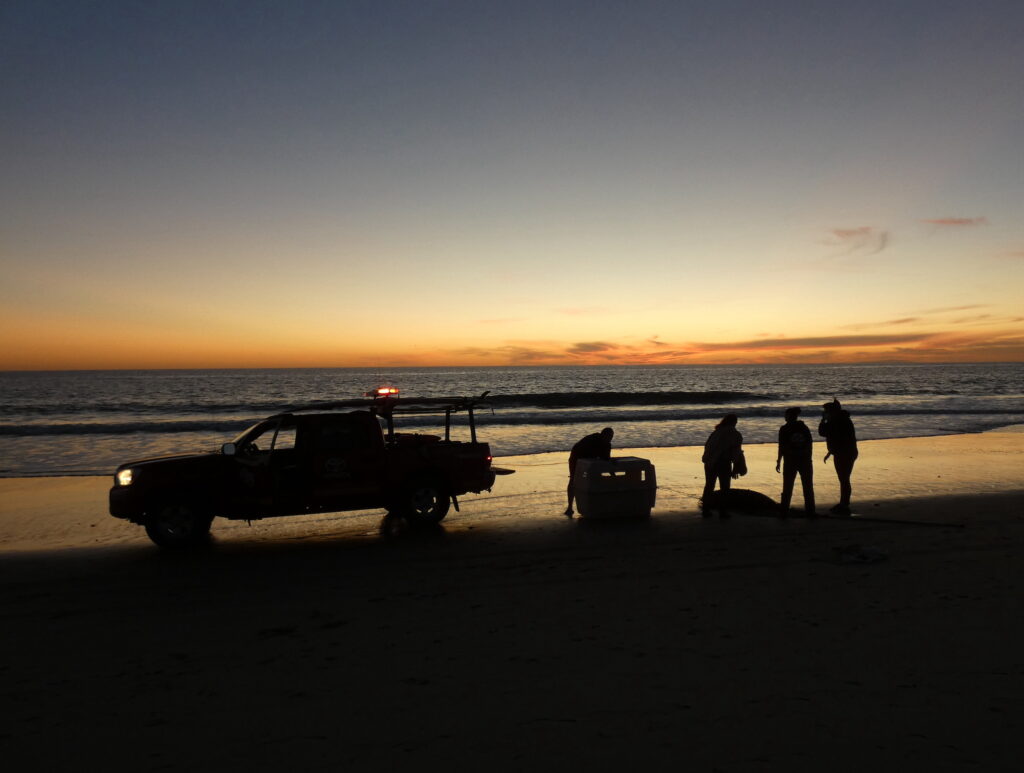
The seal was beached on the sand, just inside the surf line, feet from walkers out for a sunset stroll at Westward Beach in Malibu. It wasn’t moving, but it was breathing. An adult harbor seal on a busy beach with humans and dogs around is a rare sight. This animal was in extreme distress.
It can be hard to tell a harbor seal from a sea lion when all one sees is a head popping up out of the water—sea lions have external ears and are a solid gold or brown color, while the ear-less harbor seals have spotted coats—but on land, the differences are clear.
Sea lions are otariids—walking seals—and are able to move fairly rapidly on land using their powerful front flippers. They are still at a serious disadvantage out of the water and can be frightened by the presence of humans and injured or even killed by off-leash dogs, but they are more comfortable coming ashore than harbor seals. Sea lions are very much an everyday presence—familiar local characters who seem to enjoy surfing and swimming as much as the humans do. They are curious and cheeky, often surfacing to check out the action on the beach, surprising unsuspecting humans.
Harbor seals are phocids, “crawling seals.” They move on land by propelling themselves on their bellies. Harbor seals have short front flippers, ideal for swimming, but not much use on land. One sees them playing or hunting off shore, or hauled out on a convenient rock, but rarely up close and almost never on the beach.
This seal had no signs of external injures, but she was completely unresponsive, moving only to lift her head slightly to keep her nose out of the rising tide. She paid no attention to the humans that gathered around her.
Calling the California Wildlife Center’s Marine Mammal Response Team was the first step. Keeping curious people and dogs away from the stranded animal while waiting for the rescuers to arrive was the next. Even well-intentioned humans can scare an injured or ill animal back into the water.
Staying at least 50 feet away is not only important for the well-being of the animal, but it’s essential for the safety of the observers. Seals and sea lions have sharp teeth, powerful jaws, flippers equipped with claws and they can move surprisingly fast.
Harbor seals rarely grow to be more than five or six feet in length, but they are solidly built. This one weighed 84 kilograms—207 pounds, a challenge for the rescuers.
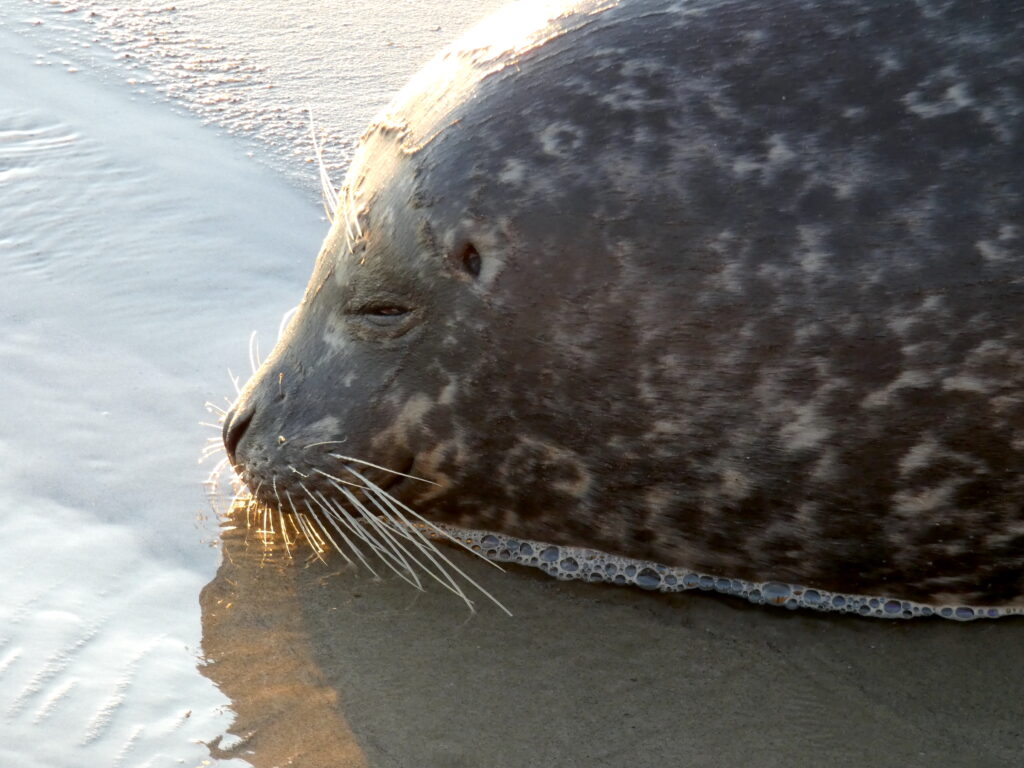
Fortunately, the CWC’s Marine Mammal Response Team was able to respond quickly. At this time of year, the team is gearing up for a busy spring season of sea lion and elephant seal pup rescues. Emergency calls for adult animals are less common. A stranded adult harbor seal is not just uncommon, it’s highly unusual.
Heather Henderson is CWC’s Marine Program Manager. She and her team responded to the emergency call, arriving within twenty minutes.
“We respond year-round to sea lion strandings but especially in March through June,” she told the Topanga New Times. “A harbor seal is interesting. We don’t see many stranded, and the number one reason is they are skittish around people. A harbor seal on the beach is a red flag if there are people on the beach. This one was in very poor shape. My first thought was, ‘are we sure she’s alive?’”
Heather, aided by CWC Volunteer Manager Kristilee Kodis and volunteer Annika Galloway, coaxed the seal into a pair of huge nets so they could haul her out of the surf, and then transfer her into a large dog crate. A Los Angeles County Lifeguard drove his truck down to the water to help transport the animal up to the CWC van. Two Beaches and Harbors employees were waiting by the van to help transfer the heavy crate. The actual rescue took only minutes.
“I can’t say enough about the lifeguards and Beaches and Harbors, Heather said. We only have so many eyes, and they work with us.”
The harbor seal was brought to CWC’s Calabasas facility, where she was evaluated and held overnight. The next day, she was transported down to the Marine Mammal Care Center in San Pedro. Her condition is “guarded.”
CWC works closely with other rescue organizations to make sure animals get the care they need. The Calabasas facility can accommodate 25 sea lions or 15 elephant seals, but it isn’t set up for adult marine mammals like the harbor seal.
“We work together,” Heather explained. “Animals like harbor seals, or even marine turtles, require specialized care. We rescue all native wildlife, but work with the other rescue organizations to make sure the animals’ needs are met.
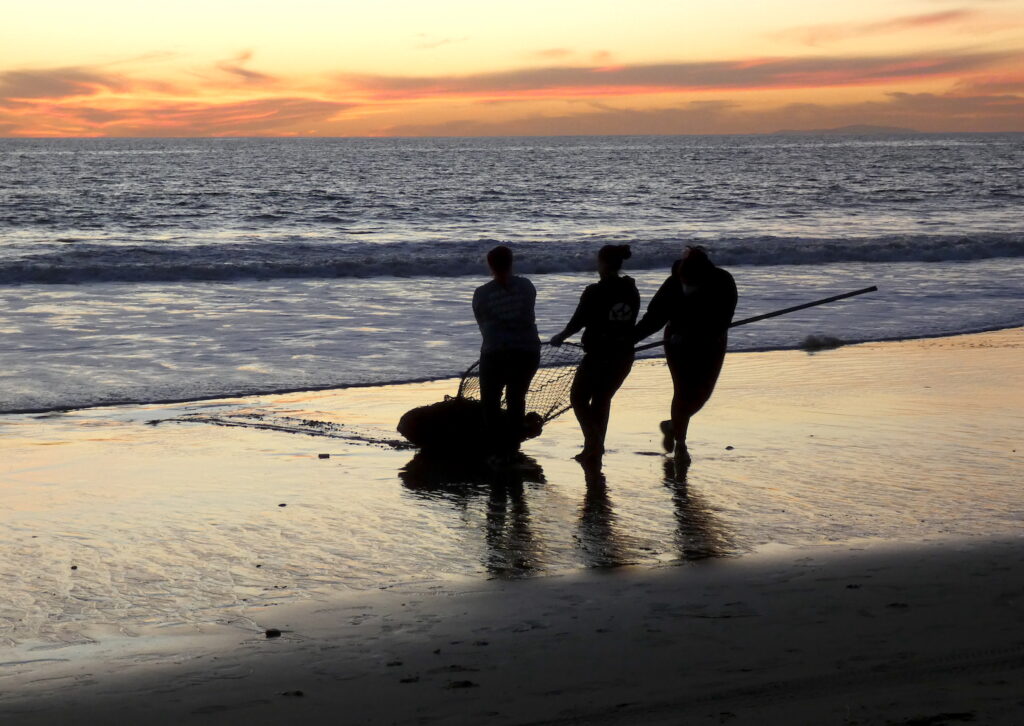
Seals and sea lions depend primarily on fish and squid and can face starvation in years when the fish population crashes. They can also be poisoned by domoic acid generated by the organisms that create the phenomenon known as red tide, and they are always at the mercy of the weather, nature hazards like sharks, and manmade ones that include ingesting garbage, being tangled in fishing tackle, struck by ship propellers, or even shot at by fishing crews.
All marine mammals are protected by the federal Marine Mammal Protection Act, but according to the Marine Mammal Care Center in San Pedro, as many as 20 percent of all cases that arrive at the non-profit organization’s treatment facility are there because of damage caused by humans.
An adult harbor seal was an unusual rescue for CWD, but the marine mammal team has seen an increase in the number of adult marine mammals stranding in recent months.
“There have been more larger animals over the last six months,” Heather said. “It’s not clear why, but it’s out of the norm.”
Heather said her team is already preparing for the spring influx of young sea lions and elephant seals. Sea lion cows give birth in early summer. A new mother may leave her pup unattended in order to hunt for food and become separated. Yearlings—sea lions born the previous season that are just learning to fend for themselves, also turn up stranded on local beaches. It can be difficult to tell whether a pup or young sea lion is safe and well or if it’s sick or injured. If in doubt, call the response team. Heather shared the team’s cell phone number and suggested that anyone encountering a stranded marine mammal take a picture and text it to her.
Not every animal that is rescued will survive, but every rescue has a chance that they otherwise would not have, and the success rate for seal and sea lion rescues is high, especially for young animals.
Feeding, treating, rehabilitating and caring for wildlife is costly and the CWC and other wildlife rescue organizations, including the Marine Mammal Center, are non-profits that depend on contributions. Learn more at California Wildlife Center at https://cawildlife.org, and the Marine Mammal Center in San Pedro at www.https://www.marinemammalcenter.org
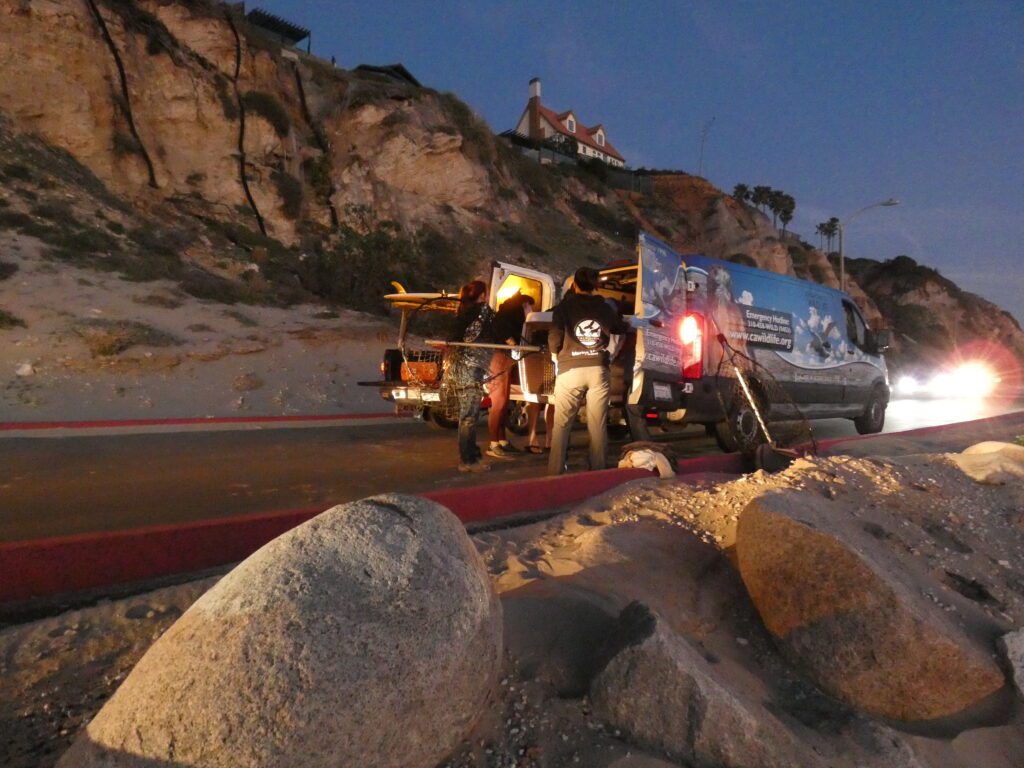
Anyone who encounters a stranded marine mammal should call or text the California Wildlife Center’s Marine Mammal Team at 310-924-7256.






